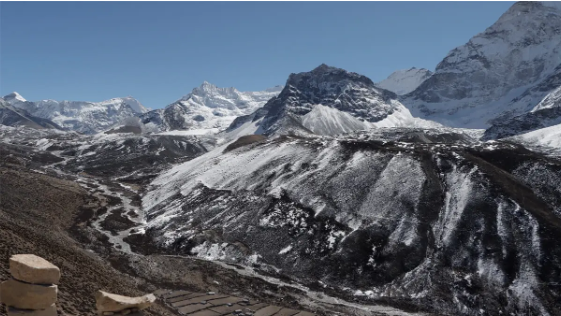Island Peak (6,189 meters / 20,305 feet), also known as Imja Tse, is one of the most popular and accessible trekking peaks in Nepal. Located in the Everest region, Island Peak Climbing offers an exciting challenge for climbers who wish to experience high-altitude mountaineering in the heart of the Himalayas. The peak is named for its resemblance to an island in a sea of ice when viewed from Dingboche, a village along the Everest Base Camp trail. Though not as technically demanding as other peaks in the region, Island Peak provides climbers with an excellent opportunity to gain experience in mountaineering while being surrounded by some of the world’s highest peaks, including Everest, Lhotse, and Makalu.
The Route and Climbing Experience
The Mera Peak Climbing expedition typically begins in the vibrant capital of Nepal, Kathmandu, where climbers meet their guide and crew. After a short flight from Kathmandu to Lukla, the trek begins with a journey to the Everest region, following the Everest Base Camp trail. Along the way, climbers pass through iconic Sherpa villages such as Namche Bazaar, Tengboche, and Dingboche, where they will acclimatize to the altitude, ensuring a safer and more comfortable climb.
The trek to the base camp of Island Peak is both scenic and physically demanding. Trekkers ascend through the Khumbu Valley, passing lush forests, monasteries, and rugged mountain landscapes. Acclimatization days in places like Namche Bazaar and Dingboche help trekkers adjust to the high altitude and prepare for the upcoming climb.
Upon reaching Island Peak Base Camp (5,200 meters), climbers will spend a night here to rest and prepare for the summit bid. The climb itself begins with an ascent to High Camp (5,600 meters), where climbers spend a final night before summiting the peak. The route to the summit is a combination of snow and rock climbing, and it requires the use of technical gear such as crampons, ice axes, and ropes. A steep ridge leads to the summit, where climbers are rewarded with stunning 360-degree views of the surrounding Himalayan giants, including Mount Everest, Lhotse, Makalu, and Cho Oyu. The view from the summit is nothing short of spectacular, with vast glaciers, deep valleys, and towering peaks stretching as far as the eye can see.
Difficulty and Technical Skills
While Island Peak is considered a non-technical climb for experienced trekkers, it does require some mountaineering skills. The ascent involves snow and ice climbing, and there are sections that require the use of fixed ropes and crampons. Climbers must be comfortable with the use of an ice axe and harness, and some prior experience in alpine climbing or high-altitude trekking is recommended. A reasonable level of physical fitness is also necessary, as the climb is demanding due to the high altitudes and steep terrain.
Island Peak provides an excellent stepping stone for those who wish to transition from trekking to more advanced mountaineering, offering a controlled and relatively safe environment to learn and practice essential climbing techniques. However, it is important to understand the risks associated with high-altitude climbing, including the possibility of altitude sickness, unpredictable weather, and difficult terrain.
Best Time for Climbing
The best time to attempt Everest base camp trek is during the pre-monsoon (spring) and post-monsoon (autumn) seasons. These periods, typically from March to May and September to November, offer the clearest weather and the most stable climbing conditions. The views of the Himalayas are also at their best during these months, with less chance of heavy snowfall or storms that can make the route more treacherous.
 Cultural and Scenic Experience
Cultural and Scenic Experience
Beyond the physical challenge of the climb, Island Peak offers trekkers and climbers the opportunity to immerse themselves in the rich Sherpa culture. The villages along the trekking route are deeply embedded in Buddhist traditions, and trekkers can visit monasteries, experience local customs, and interact with Sherpa families. The stunning landscape is also a major highlight, with views of Everest, Lhotse, and other Himalayan peaks providing a backdrop for the entire expedition.
Conclusion
Gokyo lake Trek is a rewarding and thrilling adventure for those looking to experience the world of high-altitude mountaineering in Nepal. The trek to the base camp offers stunning views of the Everest region, while the climb itself provides a chance to challenge oneself physically and technically. With the right preparation, training, and support, climbers of varying experience levels can reach the summit of Island Peak and experience the awe-inspiring beauty of the Himalayas from a unique and unforgettable perspective.

